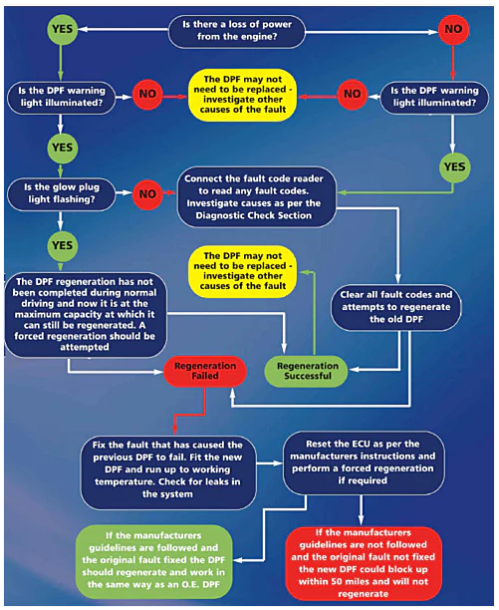
Diesel Particulate Filter or DPF
A diesel particulate filter (commonly referred to as a DPF) is a device that helps to reduce the emissions from your diesel engine by collecting soot particulates from the exhaust gasses before they enter the atmosphere. The exhaust gasses flow into the Diesel Particulate Filter and the soot particles from the gasses are filtered out and trapped within the DPF and later burned away during the regeneration process.
Why Do Cars Have DPF's?
With changes to the car emissions legislation, diesel particulate filters are required for vehicles to reach the Euro 4, Euro 5 & Euro 6 emissions standards.
How Does a Diesel Particulate Work or DPF Work?
Unlike a Catalytic Converter a DPF is not a flow through device. The channels of the filter are blocked at alternate ends meaning the gasses are forced to flow through the cell walls in order to exit the filter. As the cell walls are porous, the gasses are allowed to pass through, but the particulate matter is held. This ensures that only the clean exhaust gasses can exit, and the particulate matter is trapped in the filter. Click on the link to watch a video.
Passive Regeneration
Passive regeneration takes place automatically on motorway-type runs when the exhaust temperature is high. Many cars don't get this sort of use though so manufacturers have to design-in 'active' regeneration where the engine management computer (ECU) takes control of the process.
Active Regeneration
Active Regeneration occurs when the level of soot in the filter reaches around 45%. The ECU makes small adjustments to the fuel injection timing and increases the exhaust gas temperature. This increases the exhaust temperature which then initiates the regeneration process, burning away the soot trapped in the DPF. If the journey is a bit stop/start the regeneration may not complete and the warning light will come on to show that the filter is partially blocked.
It should be possible to start a complete regeneration and clear the warning light by driving for 20 minutes or so at speeds greater than 50mph.
If you ignore the warning light and keep driving in a relatively slow, stop/start pattern the soot loading will continue to build up until around 75% when you can expect to see other dashboard warning lights come on too. At this point driving at speed alone will not be enough and you will have to take the car to a workshop for a forced regeneration.
If you continue to ignore warnings and the soot loading keeps increasing then the most likely outcome will be that you will have to get a the DPF replaced.
Forced Regeneration
If the Active & Passive Regeneration process is no longer working it may be necessary to peform a Forced Regeneration. This process involves connecting a diagnostic computer to the vehicle and overiding the soot accumulation levels calculated by the engine ECU to initiate and immediate regeneration of the DPF. However if the engine ECU detects that the DPF back pressure level is too high it will abort the regeneration to protect the engine. If this happens it's very likely that you will need to replace the blocked DPF.